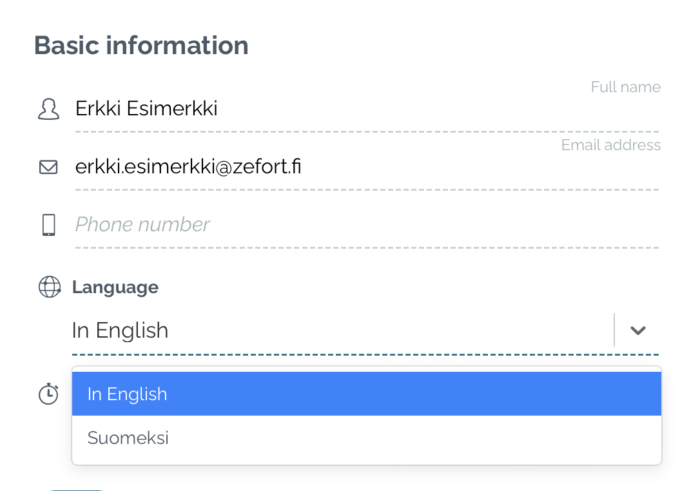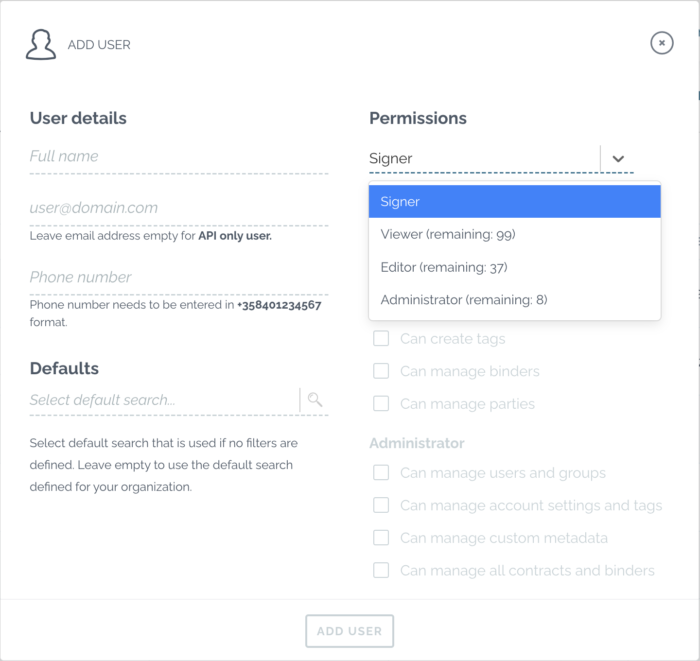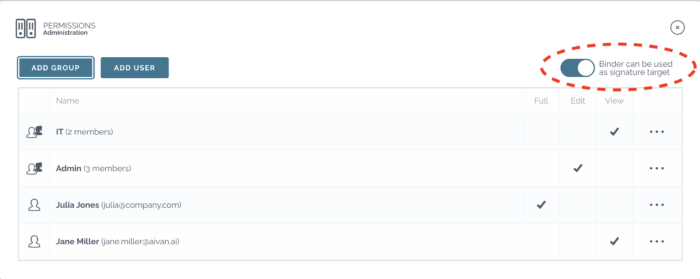Manage user licenses via SCIM
With the SCIM integration, Zefort administrators can automatically create and update Zefort user groups based on user groups managed in identity providers such as Azure AD or Okta. Now, you can also link groups to specific Zefort user licenses, such as Editor, to automatically give all users in those groups the respective license level.
To learn more, check out the Managing user licenses via SCIM knowledge base article.
Easily identify AI-filled fields 🤖
Fields completed by the AI are now easy to identify with the green lightbulb icon.
Improved handling for titles 🧠
We’ve deployed an all-new AI model to get better suggestions for the document title. Hopefully, you’ll notice that they are better.
Should the AI pick an inaccurate title, you can now easily highlight the correct title directly within the document.
By providing your input, you’ll be helping the AI learn and enhance its performance for future tasks!
Zefort Sign now available in Swedish 🇸🇪
In addition to strong authentication with Swedish BankID, Zefort Sign is now available in the Swedish language!
Zefort in Finnish 🇫🇮
Recently, we announced that Zefort Sign is available in Finnish.
Now, the rest of Zefort’s user interface for Viewers and Editors has been translated to Finnish as well! You can set your personal language preference under My Settings.

Zefort Sign fully supports Norway 🇳🇴
Strong authentication using BankID in Norway is now available for all Zefort Sign customers.
Zefort Sign is also now available in Norwegian Bokmål.
Zefort Sign in Finnish 🇫🇮
Zefort Sign is now available in Finnish. When creating a new signing request, you may select the language separately for each signer from the “details” view. The default language is same as the language on your user account (most likely English).
All the emails and web pages the signer sees will then be in the selected language.
We’ll be adding more languages shortly: Swedish and Norwegian — stay tuned!
Support for MitID (Denmark) 🇩🇰
Zefort Sign now supports using MitID, Denmark’s national eID solution, to strongly authenticate signers.
Stay tuned for more methods in the near future (e.g. BankID Norway).
Zefort Sign updates
Zefort Sign now adds a small notification text to the footer of each page in a signed document, to show that the document has been signed with Zefort Sign. It looks like this:

PDF is a file format which can be “encrypted”. This means that it can be password protected from viewing, editing, signing, printing, and so on. A PDF can be protected even if there is no password required to view the file. Zefort Sign will now let you know that the file cannot be signed, as soon as you’ve selected it for uploading.
You can now search for failed Signature requests by the reason they failed: expired, canceled or declined.
New contract bulk operations
Zefort has new contract bulk operations for binders. Already before it has been possible to add several contracts to a specific binder with one go, but now you can also remove several contracts from binder(s).
For that you now have two options:
1) Remove selected contracts from a specific binder
2) Remove selected contracts from all binders except one selected binder
See how on a video below:
SCIM support
Zefort supports SCIM user and group provisioning with Azure AD (and various other SCIM providers).
More info here: https://zefort.com/support/configure-user-and-group-provisioning-with-scim-and-azure-ad/
A new “Signer” license type and a new Binder property
If you have Zefort Sign enabled in your Zefort account, you can now invite users with a Signer license. Users with a Signer license only have access to the “Signatures” view, to create, search, and manage eSign requests. Each account has a unlimited number of Signer licenses.

Binders can be blessed with a new permission: “Binder can be used as signature target”. Optional signature target binder can be selected when creating a new eSign. Binders with a permission”Binder can be used as signature target” are visible to all Signer license users when they create an eSign request.
